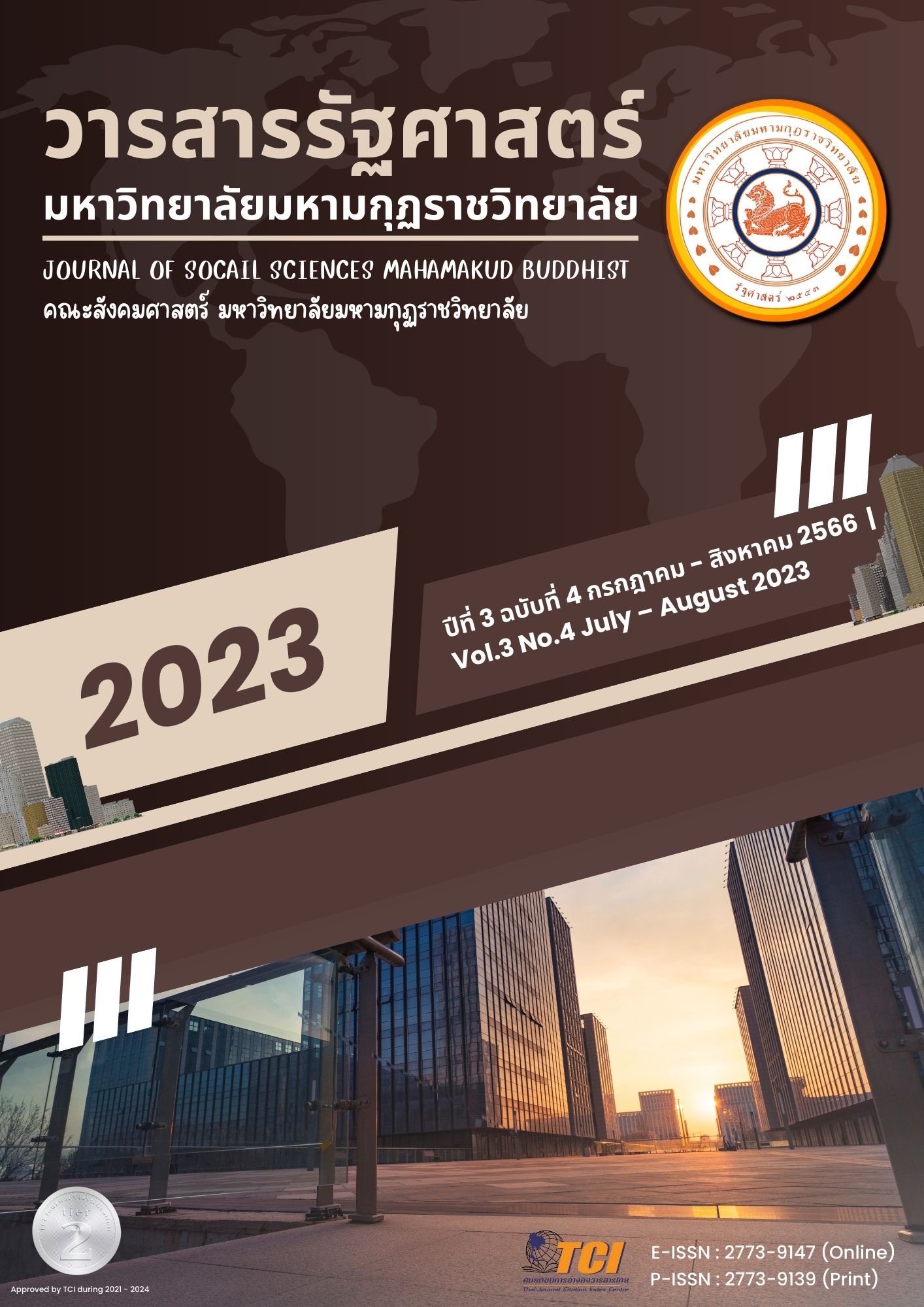THE ROLE OF MUEANG MAI SUBDISTRICT ADMINISTRATIVE ORGANIZATION IN AMPHAWA DISTRICT, SAMUT SONGKHRAM TOWARDS THE BUILDING OF KNOWLEDGE AND UNDERSTANDING IN HEALTH FOR DIGITAL CITIZEN IN THE AREA
Main Article Content
Abstract
The main objective of this research was to study the role of Mueang Mai Subdistrict Administrative Organization, Amphawa District, Samut Songkhram Province in building health knowledge and understanding among digital citizens in the area. This research is a form of research and development. Data were collected from in-depth interviews, using interview forms as tools used for research from key informants, namely executives of local administrative organizations and civil servants and relevant employees. A total of 5 people to replicate the model of the role of Muang Mai Subdistrict Administrative Organization, Amphoe Amphawa, Samut Songkhram Province to create a better understanding of digital health for local citizens and collect data to bring the data from in-depth interviews to be analyzed as a public service model.
The study found that Muang Mai Subdistrict Administrative Organization, Amphawa District, Samut Songkhram Province will play a role in health care caused by the use of digital devices, mental health care caused by the use of digital devices, and counseling in health treatment. properly to others and roles in enhancing access to digital health services for the digital health learning model, it operates through 2 main projects, namely the Dhamma Hansa project. and a community forum where the community will come to exchange with the Muang Mai Subdistrict Administrative Organization Including inviting speakers to give knowledge, there will be social issues inserted, causing local people to learn about health in the digital age in an indirect and informal way rather than being mixed.
Article Details

This work is licensed under a Creative Commons Attribution-NonCommercial-NoDerivatives 4.0 International License.
References
กระทรวงดิจิทัลเพื่อเศรษฐกิจและสังคม. (2560). แผนยุทธศาสตร์กระทรวงดิจิทัลเพื่อเศรษฐกิจและสังคม พ.ศ.2562-2565. กรุงเทพมหานคร: กระทรวงดิจิทัลเพื่อเศรษฐกิจและสังคม.
กีรติ กิจธีระวุฒิวงษ์, นิทรา กิจธีระวุฒิวงษ์, นงนุช วงศ์สว่าง. (2560). การสาธารณสุขในยุคประเทศไทย 4.0. วารสารวิชาการสาธารณสุข, 26(2), 377- 388.
ปารวีร์ กุลรัตนาวิโรจน์. (2548). การพัฒนากระบวนการมีส่วนร่วมของชุมชนในการส่งเสริมการออกกำลังกายของประชาชน หมู่บ้านชนบทแห่งหนึ่ง จังหวัดชัยนาท. ใน วิทยานิพนธ์ปริญญามหาบัณฑิต สาขาวิชาพยาบาลชุมชนบัณฑิตวิทยาลัย. มหาวิทยาลัยบูรพา.
วรพจน์ วงศ์กิจรุ่งเรือง. (2561). คู่มือพลเมืองดิจิทัล. กรุงเทพมหานคร: สำนักงานส่งเสริมเศรษฐกิจดิจิทัล กระทรวงดิจิทัลเพื่อเศรษฐกิจและสังคม.
วิทยา ดำรงเกียรติศักดิ์. (2558). พลเมืองดิจิทัล. เชียงใหม่: คณะสารสนเทศและการสื่อสาร มหาวิทยาลัยแม่โจ้.
สุพิณญา คงเจริญ. (2560). โรคอ้วน:ภัยเงียบในยุคดิจิทัล. วารสาร EAU HERITAGE, 11(3).
สำนักงานพัฒนาธุรกรรมทางอิเล็กทรอนิกส์. (2562). รายงานผลการสำรวจพฤติกรรมผู้ใช้อินเทอร์เน็ตในประเทศไทยปี 2561. กรุงเทพมหานคร: สำนักยุทธศาสตร์สำนักงานพัฒนาธุรกรรมทางอิเล็กทรอนิกส์ (องค์การมหาชน )กระทรวงดิจิทัลเพื่อเศรษฐกิจและสังคม.
เอกชัย กี่สุขพันธ์. (2559). การบริหารสถานศึกษายุคดิจิทัล (School Management in Digital Era). เรียกใช้เมื่อ 12 มกราคม 2565 จาก http://www.trueplookpanua.com.
Elmore, Richard E. (1978).Organizational Models of Social Program Implementation. Public Policy, 26(2).
Matland, RE .(1995). Synthesizing the implementation literature: The ambiguity–conflict model of policy implementation. Journal of Public Administration Research and Theory, 5(2),145–174.


